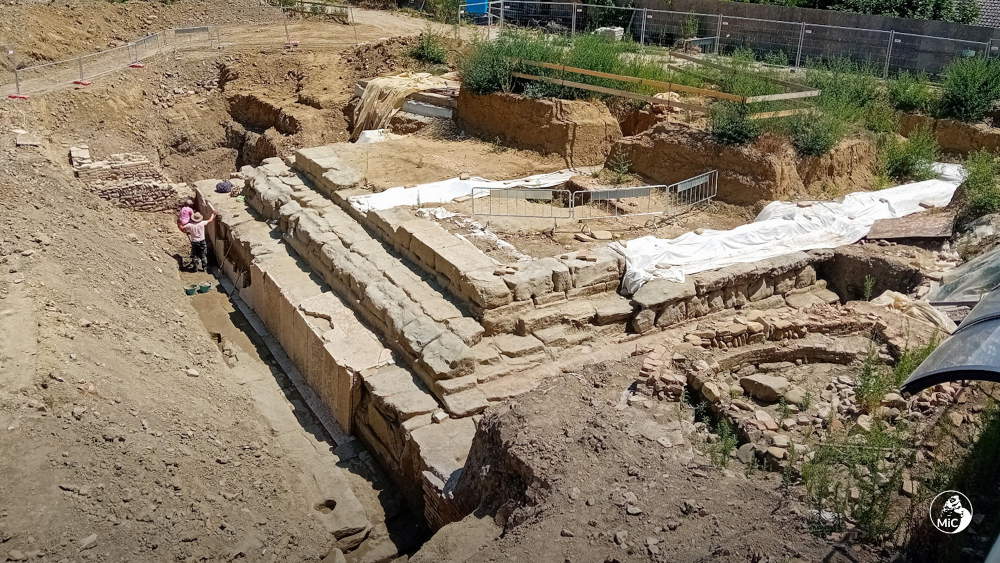A tripartite temple traceable to theRoman age, with adjacent early medieval structures, has recently emerged in Sarsina (Forlì-Cesena), the hometown of playwright Plautus. The find will be presented at the European Heritage Days scheduled for September 23 and 24, 2023.
The activities, directed by the Soprintendenza Archeologia, Belle Arti e Paesaggio (ABAP) for the provinces of Ravenna, Forlì-Cesena and Rimini, identified the remains of a large quadrangular structure that can be traced back to a Roman-era cult building, preliminarily dated to the first century B.C, coeval with the forum sandstone slab pavement left exposed in the nearby public archaeological area and also found at the base of the structural evidence unearthed. Its state of preservation is also exceptional: a single imposing structure in horizontal courses of sandstone blocks, identified as the podium above which the walls of the ancient cult building must have stood, according to the type of Italic temple well attested in the peninsula, preserved to a maximum height of 2.85 meters.
From the data collected after the excavations directed by archaeologist Romina Pirraglia, an official of the Superintendence, and financed by the Ministry of Culture for the part not affected by thework to be carried out (demolition of a municipal gymnasium and construction of a modern multipurpose facility), it emerges that it is almost certainly the Capitolium, of which remains the podium covered with marble slabs, a water drainage system, later frequentations and reuses testified by burials and hearths, as well as a probable antecedent phase that should be traced back to the Umbrian settlement attested from the 4th cent. BC.
“This find is an important archaeological treasure that can offer valuable information about the history and evolution of a specific geographical area,” said Culture Minister Gennaro Sangiuliano. “It can reveal a rich history of settlement, cultural changes and transformations in society over the centuries. It is an important contribution to our understanding of the past and can have significant implications for historical and archaeological research, which we are boosting with extraordinary results throughout Italy.”
For ABAP Director General Luigi La Rocca, “the entire operation represents a further opportunity to reiterate the importance and accuracy of the protection actions carried out by the Ministry’s peripheral structures, which enable the safeguarding and preservation of our cultural heritage on the basis of a’in-depth cognitive activity, the results of which will not fail to open opportunities for scholarly discussion and interesting prospects for enhancement in an area hard hit by last May’s flood and which is therefore at the center of the Ministry’s action and attention.”
“The methods of dissemination and enhancement of the results will be conducted in synergy with the Municipality of Sarsina and the Sarsinate National Archaeological Museum attached to the Regional Museums Directorate of Emilia Romagna, also through innovative technologies, with the preparation of ways of using them in 3D, as well as finding space in upcoming publications both educational and scientific,” added ABAP Superintendent Federica Gonzato.
 |
| Sarsina, Roman-era temple found with early medieval structures |
Warning: the translation into English of the original Italian article was created using automatic tools. We undertake to review all articles, but we do not guarantee the total absence of inaccuracies in the translation due to the program. You can find the original by clicking on the ITA button. If you find any mistake,please contact us.